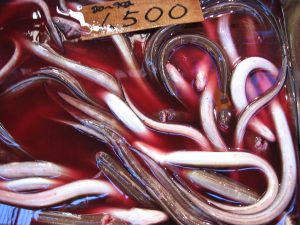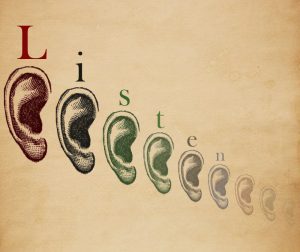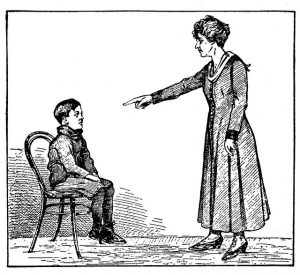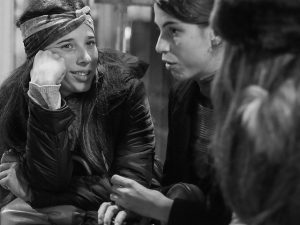
Not every career begins at school, but for many individuals who have drug and alcohol problems, adolescence is the start of a career in addiction. The American Academy of Paediatrics recognises this and has published a report offering advice to clinicians on how to spot and treat young people who are using drugs and alcohol in a problematic way (Levy et al 2016).
My fellow Elf, Sally Adams, outlined the original Screening, Brief Intervention and Referral to Treatment SBIRT) report in a blog last year (Adams 2015).
Although many young people will not develop a dependency on psychoactive substances during early adolescence, they are vulnerable to the risks of substance use in many ways. They are often naïve to the dosing and effects of substances, so can take too much of a substance, or act in such way under the influence of a substance that it compromises their health.
When you combine these risks with a group of workers such as paediatricians, some of whom don’t ask about substance use, then there are clearly missed opportunities to reduce the potential for harm resulting from substance use.
But we need to be careful, as collectively our knowledge about prevention strategies for this group is very limited and at times has caused more harm than good (Conrod et al, 2015).
So it makes sense to offer guidance to clinicians, but how do we ensure it’s evidence-based and what might be the differences for workers in the United Kingdom?

Effective prevention strategies are as elusive as a slippery eel.
Methods
This is a report not a systematic review, so it is reasonable that the authors state that they were ‘informed’ by the research in writing their guidance. This might improve the chances of it being read by busy workers who need an appraisal of the issue and practical pointers on what to do, but of course it also means it’s susceptible to the biases that come with any ‘expert consensus’.
Results
The SBIRT guide covers every part of the substance use pathway, from screening through to treatment. In the main, the screening part of this guide is universal; it includes the Alcohol Use Disorders Identification Test (AUDIT) which is also used widely in the UK.
It is the treatment part where some discrepancies start emerging. On the one hand it is good to see motivational strategies included but the way they are described seems to skew their application towards the paediatrician telling the person what to do. Motivational interviewing is based on a Rogerian person-centred approach which believes it is the person who has the solution to their problems not the professional. The acid test as a therapist is to listen more than you talk.
For those that need something more than a brief intervention, the section of the report that guides paediatricians through treatment options appears clearer. It is encouraging to see that the complex interplay between physical and mental health are acknowledged. A useful wish list of eleven ideal components of treatment are included (listed below). Crucially the role that family play is highlighted.

Talk less, listen more.
Optimal standards for a substance use disorder treatment program
- View drug and alcohol use disorders as a primary disease rather than a symptom
- Include a comprehensive patient evaluation and a developmentally appropriate management and treatment referral plan for associated medical, emotional, and behavioral problems identified
- Maintain rapport with the patient’s pediatrician to facilitate seamless after-care and primary care follow-up
- Adhere to an abstinence philosophy and consider the patient’s continued use of tobacco, alcohol, or other drugs as indicating more treatment is needed rather than the program should discharge or refuse to treat
- Maintain a low patient-to-staff ratio
- Use treatment professionals who are knowledgeable in both addiction treatment and child and adolescent behavior and development
- Maintain separate treatment groups for individuals at varying developmental levels (adolescents, young adults, and older adults)
- Involve the entire family in the treatment and relate to the patients and their families with compassion and concern. Programs located as close to home as possible are preferable to facilitate family involvement, even though separation of the adolescent from the family may be indicated initially
- Offer patients an opportunity to continue academic and vocational education and assistance with restructuring family, school, and social life. Consider formal academic and cognitive skills assessment, because unidentified weaknesses may contribute to emotional factors contributing to the substance use
- Keep the family apprised of costs and financial arrangements for inpatient and outpatient care and facilitate communication with managed-care organizations
- Ensure that follow-up and continuing care are integral parts of the program.
The above list is reproduced from Levy et al, 2016.
Conclusions
This is an ambitious guide as it tries to cover everything related to young people’s substance use, even considering those who don’t use substances.
Usually case examples are helpful as they illustrate neatly how clinical guidance can be applied. Unfortunately the case examples included in this report only demonstrate how not to interact with a person of any age. They sound like a parent telling off a child, using facts to frighten and not doing much in the way of listening. For example, telling people to ‘quit’ their drug use is the least effective method of inducing change.

Telling children off doesn’t work.
Strengths and limitations
The idea of producing clear guidelines in this summarised format is a good. As it acknowledges psychoactive substance use can be problematic. Equally intervening early makes sense.
There are clear differences in the healthcare system in America compared to the UK. There are also some differences in the incidence and prevalence of specific drug use. So while cannabis use has been falling in the UK, it is on the rise in America.
The guidelines are produced by the Academy of Paediatrics and written with paediatricians in mind, limiting their likely readership and engagement with other key staff.
It is difficult not to consider the potential conflict of interests, as some young people and their families will be paying for healthcare, there could be an incentive to over treat. Although as the report points out, less than 50% of paediatricians routinely screen for substance use.
Adolescence is defined as approximately starting at age 12 going on until the early twenties, and I’m not sure that in the UK we would view adolescence as extending this far. Perhaps it doesn’t matter, but I suspect it does, otherwise why would commercial producers of tobacco and alcohol employ distinct marketing strategies and products for this demographic?

When does adolescence end and adulthood begin? An important consideration for drug marketeers!
Summary
Despite all the trials investigating various interventions, it is the therapist that really makes a difference, qualities such as being warm, honest and empathic are the key attributes we should all strive to hone (Sellman 2010).
Families play a critical role in helping young people navigate their relationship with psychoactive substances. Despite evidence in support of family interventions, their uptake in the UK is limited (Watson et al 2015).
The National Institute for Health and Care Excellence is currently seeking views on its draft guidance on substance misuse prevention, this includes gathering views and evidence on what is effective for young people (NICE, 2016). Rather than a shock and awe approach to young people, NICE suggests skills training is important. Nurturing the ability to be resilient, assertively refuse drugs and develop problem solving skills are some of the examples listed. Critically NICE also recommends providing credible, non-biased information about drugs; I take that to mean acknowledging pleasure as well as problems.
Paediatricians are missing an opportunity to identify and treat young people who have a problem with substances, but they are not helped completely by this report. In parts it fails to source the most credible evidence and acknowledge what we don’t know, which is a significant problem.
As the saying goes: until you admit you have a problem you can’t move on. We have a problem with really knowing what is effective in preventing young people getting into trouble with drugs, we just need to admit it.

Hands up who thinks we know how to prevent young people getting into trouble with drugs?
Links
Primary paper
Levy SJ, Williams JF, AAP Committee on substance use and prevention. (2016) Substance Use Screening, Brief Intervention, and Referral to Treatment. Pediatrics. 2016;138(1): e20161211
Other references
Adams, S. Screening, Brief Intervention and Referral to Treatment (SBIRT). The Mental Elf 22nd December 2015: https://www.nationalelfservice.net/mental-health/substance-misuse/screening-brief-intervention-and-referral-to-treatment-sbirt/
Conrod PJ, Brotherhood A, Sumnall H, Faggiano F, Wiers R. (2015) Drug and alcohol policy for European youth: current evidence and recommendations for integrated policies and research strategies. The Impact of Addictive Substances and Behaviours on Individual and Societal Well-being, p.119.
National Institute for Health and Care Excellence (2016) Drug misuse prevention (Draft consultation) – https://www.nice.org.uk/guidance/indevelopment/GID-PHG90/consultation/html-content
Sellman D. (2010) The 10 most important things known about addiction. Addiction, 105(1), 6-13. [PubMed abstract]
Watson J, Back D, Toner P, Lloyd C, Day E, Brady LM, Templeton L, Ambegaokar S, Parrott S, Torgerson D, Cocks K. (2015) A randomised controlled feasibility trial of family and social network intervention for young people who misuse alcohol and drugs: study protocol (Y-SBNT). Pilot and Feasibility Studies, 1(1), p.1.

Today @ian_hamilton_ on @AmerAcadPeds report on Substance Use Screening, Brief Intervention & Referral to Treatment https://t.co/EP5FvNY2wV
We know little about effective ways of preventing young people & #addiction ? @Mental_Elf https://t.co/5Q7CLf8kL2 https://t.co/JcEwhaScIE
she’s everywhere today that @SallyScientist – @guardian https://t.co/Hf4GneWb1q & @Mental_Elf https://t.co/5Q7CLf8kL2
Hands up who thinks we know how to prevent young people getting into trouble with drugs? https://t.co/b79DJJyFmk https://t.co/fKjAAAfJTQ
@Mental_Elf @Mentortweets evidence-based preventative programmes https://t.co/nF9QVqz63o https://t.co/pLeRYqMFLI
If I knew that the information would be worth a lot! https://t.co/39ik4DrMbS
The AAP report includes some good standards, but others which I think are a complete non-starter here in the UK https://t.co/5Uvkb5dgwu
@Mental_Elf @ian_hamilton_ I’m concerned that adolescent SUD is viewed as a ‘primary disease’, which contradicts understanding of mult.risk
.@profhrs @Mental_Elf yes good point as @TurningPointUK made clear in their new report highlighting ‘disintegration’ of services & response
@ian_hamilton_ @profhrs @Mental_Elf @TurningPointUK still tries to fit YP services around adult models – square pegs, round holes?
.@IanA_Mac @profhrs @Mental_Elf @TurningPointUK interesting observation Ian & must make accessing services problematic for some young people
@profhrs @Mental_Elf @ian_hamilton_ yes, agree with good people from @LifelineProject at #cannabismatters conf need holistic view, but…
@profhrs @Mental_Elf @ian_hamilton_ …if this were more a “don’t think substance use ain’t important enough to treat” would be happier
@profhrs @Mental_Elf @ian_hamilton_ remember work I did with @AlcoholConcern about young offenders & alcohol where too often alcohol ignored
@Mental_Elf @ian_hamilton_ you could quibble about abstention, and insurance payment not relevant, but others good common sense
@Mental_Elf @ian_hamilton_ always uneasy to remember that our USA friends have to pay a lot of money for (sometimes substandard) treatment
.@profhrs @Mental_Elf yes not sure how availability of treatment for marginalised groups is impacted by Medicaid/Medicare ?
.@Mental_Elf @TurningPointUK @profhrs via @andrewbrown365 – https://t.co/NeAUra9iGF
What can be done to prevent the next generation developing #drug problems ? via @Mental_Elf https://t.co/5Q7CLf8kL2 https://t.co/QQWlID1XVg
RT @Mental_Elf: “Talk less, listen more”
@ian_hamilton_ on young people & drugs
Read his brilliant blog https://t.co/izZNiktxnQ https://t.c…
Don’t miss
Guided or misguided?
New advice on young people and drugs
#SBIRT
https://t.co/SnbvFewgCc https://t.co/FajeqfElPa
.@jonnyward21 @MHChat or even self medicated ? see today’s @Mental_Elf https://t.co/oC3LTrMno7 https://t.co/egbF4h2Lgp
New advice on young people and drugs (SBIRT) very @iTHRIVEinfo like https://t.co/VfvBzfhdWF
From the @Mental_Elf: Guided or misguided? New advice on young people and drugs… https://t.co/meaIjdq6Oo #drugs
Guided or misguided? New advice on young people and drugs (SBIRT) https://t.co/soCAphNXjS
Guided or misguided? New advice on young people and drugs (SBIRT) https://t.co/BoNZSd2sWh
RT @SSA_Addiction: Guided or misguided? New advice on young people and drugs (SBIRT) https://t.co/pDkTYqnhBG via @sharethis
Guided or misguided? New advice on young people and drugs (SBIRT) https://t.co/B1H00WTgWJ via @sharethis
Guided or misguided? New advice on young people and #drugs ( #SBIRT ) https://t.co/5XTeu91q0H